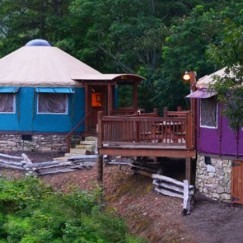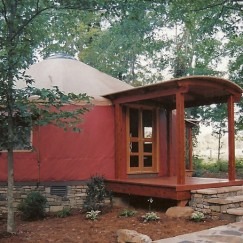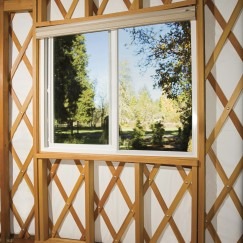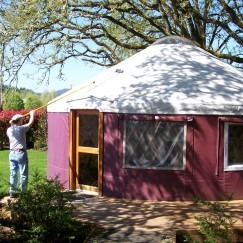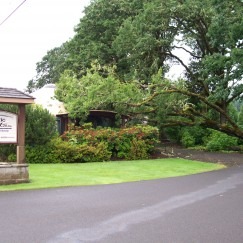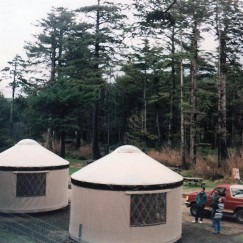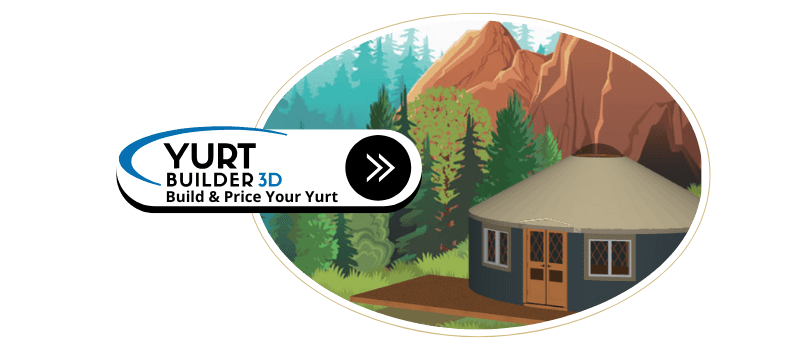How a 21-Year-Old Yurt Started a New Chapter for an Oregon Family
The rich, green lands of northwest Oregon are home to a smattering of agricultural trusts that surround the Portland and Canby areas. On one of those trusts sits a Pacific Yurt with a particularly rich history. The owner of the trust bought the yurt more than twenty years ago, and since then, it has seen its fair share of summers and winters and provided housing to countless farmworkers. Most recently, it was purchased by Craig Tutor, friend of Pacific Yurts and former regional manager of Oregon State Parks.
We’ve previously spoken to Craig about how yurts have been a major difference maker for the OSP system. But this yurt wasn’t for the park system – Craig planned to keep this one in the family. And as it turns out, the story of this purchase and its aftermath shows how one simple yurt can do big things, from bringing together families, advancing careers, reducing the cost of living for a young couple, and more.
So we decided to sit down with Craig once again to hear how, more than just being the sum of its parts, a yurt carries the weight of its history – and its future.
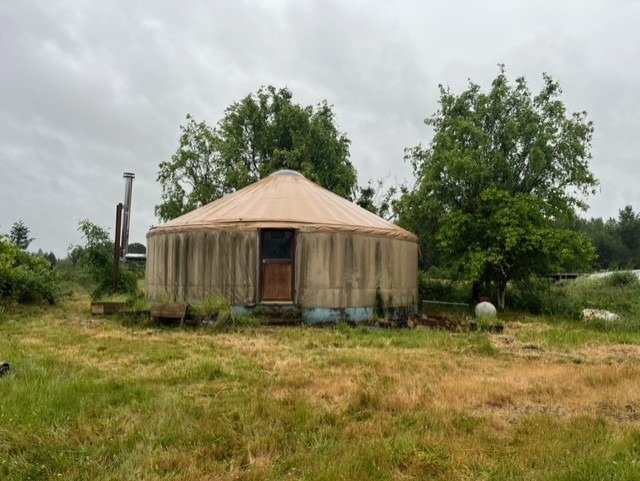
How did you end up purchasing this yurt, and who is living in it?
We bought the yurt for my daughter and her fiance earlier this year. They’re vegetable farmers and have a farm pretty close to the trust where the yurt sits. Being farmers, it was natural that they would be in the same orbit as the owner of an agricultural trust in their area, and that they would meet.
The owner first purchased the yurt in 2003 and originally used it as worker housing. But by the time we connected with him, it hadn’t been used that way for a while, and a good deal of time had passed since any real maintenance was done on the yurt. So we bought it from him, fixed it up, and now my daughter and her fiance are living there and paying rent to its previous owner, who still owns the land where the yurt sits.
What about this yurt caught your daughter’s attention?
The first thing is that it’s much closer to their farm than where they were previously living. It’s also more bang for their buck – it’s cheaper to rent than their apartment in Portland, and at 30 feet in diameter, it’s actually bigger, too.
On top of that, it’s just a gorgeous area. There are fruit trees everywhere, it’s surrounded by the green of rural Oregon, all of that.
Can you tell us a bit about your daughter’s farm?
Well, it’s a vegetable farm, and the way they do most of their business is through community supported agriculture, or CSAs. People buy a share from them, and the farm sends them a box of vegetables on a weekly basis. On top of that, they’re a vendor at the Oregon City Farmer’s Market every weekend, and they sell to a couple of restaurants, too. By allowing them to live closer to the farm, the yurt just makes it so much easier to run their business.
You mentioned it had been a while since the previous owner had done maintenance. When you became the owner, what was the renovation process like?
I know from my experience bringing Pacific Yurts to Oregon State Parks that quality of materials is a big deal for you guys. That made fixing up this yurt much easier than one might otherwise expect. When we got it, the roof was in good shape, and all the timbers used for the lattice and the support were looking pretty great, even after 21 years and little maintenance work. Basically, all we had to do was replace the siding, which was pretty easy. It was easy to order, and the Pacific Yurts staff made sure we got everything we needed quickly.
One nice thing is that we were able to make a family affair out of it. Pacific Yurts are well-designed in that you don’t need a professional crew with specialized skills to work on them, so we got my daughter and her fiance to come down, as well as a buddy of mine, and we all did the renovation work together.
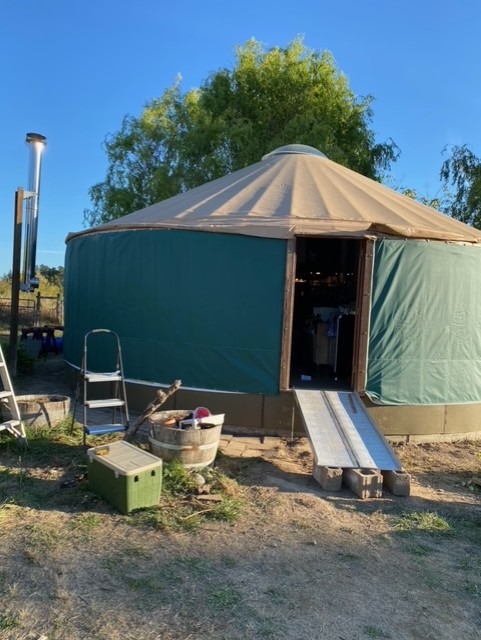
How long did it take to get the yurt into livable condition?
Well, we ordered the siding and that arrived pretty quickly. Then we took off the old siding and skirting, as well as the insulation – when it was built back in 2003, they used that old pink insulation, which needed to be switched out.
That was the first day. Then we spent another day replacing all those things with the new materials. Then we spent some time on cleanup. I’d say from ordering the parts to getting the yurt into a condition where my daughter could move in, it took just about a week, or maybe a little less. Now we’re looking at other upgrades we can do, the first of which is adding two of the new glass windows Pacific Yurts is now offering.
Is the plan for your daughter and her fiance to live in this yurt for the long term?
More likely the idea is that they’ll live in it for a few years, which will allow them to save money because it’s so affordable to live there. Then the plan is to buy a house nearby. But even when that happens, we’re planning to keep the yurt.
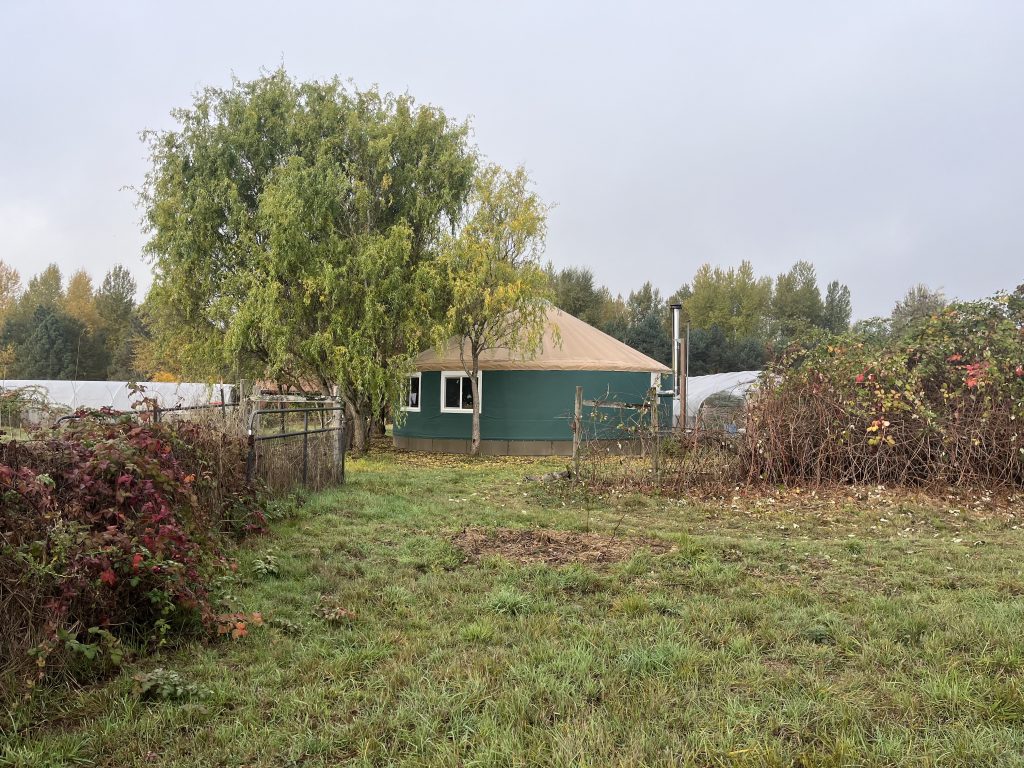
What will be the plan for the yurt at that point?
Well, my daughter has a degree in early childhood development, and has been a nanny for years. One thing she would love to do is open a daycare center or a preschool in the yurt. It would be kind of specialized in agriculture. They could take the kids to the farm and teach them about growing food, with the yurt as kind of a home base. So the yurt is basically serving three purposes: It’s providing her a home, it brings her closer to her farm so she can grow her business more effectively, and it’s opening opportunities for a new career venture in an area she’s always been passionate about. And none of it would really be feasible without the flexibility and ease of yurt life.
